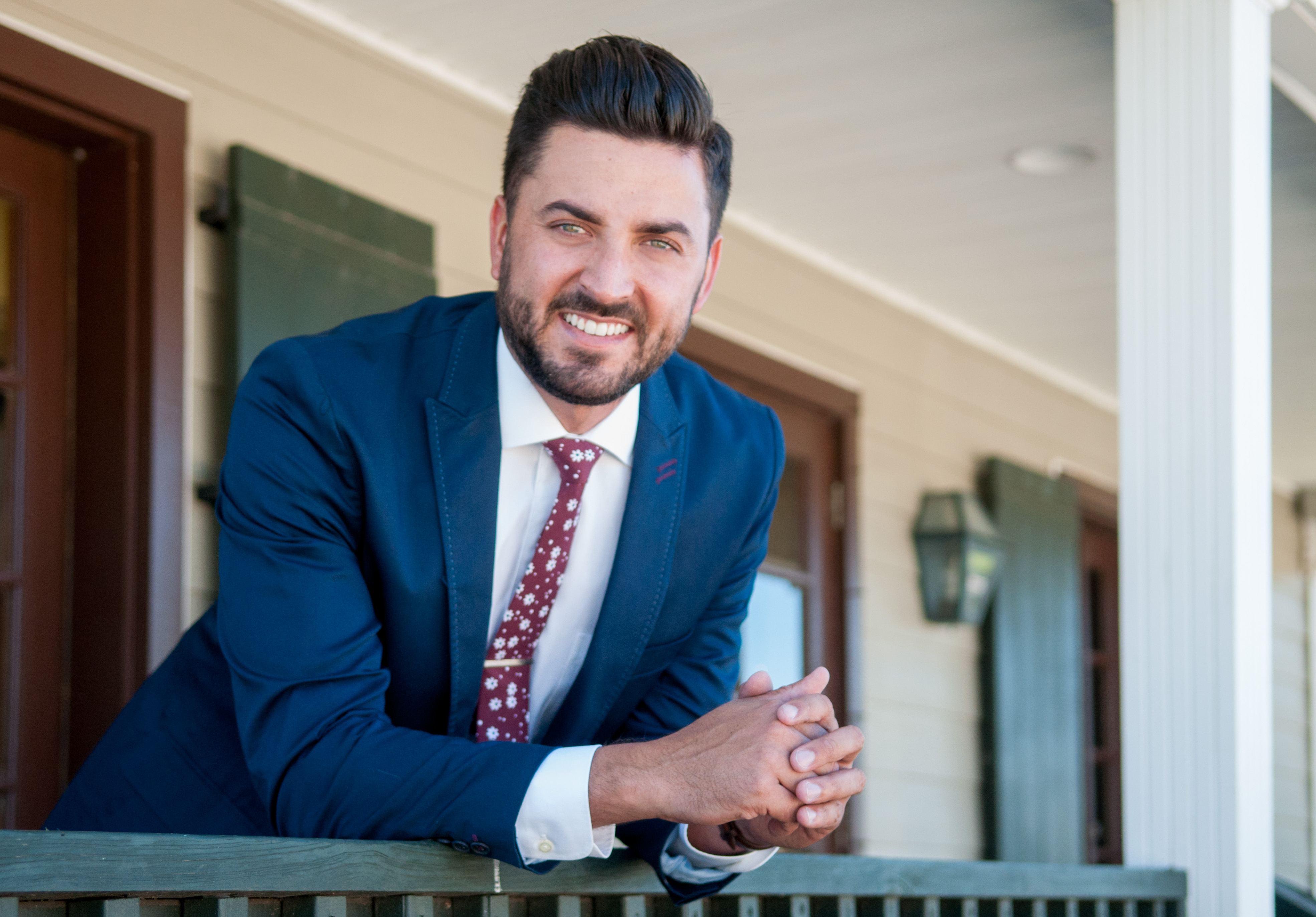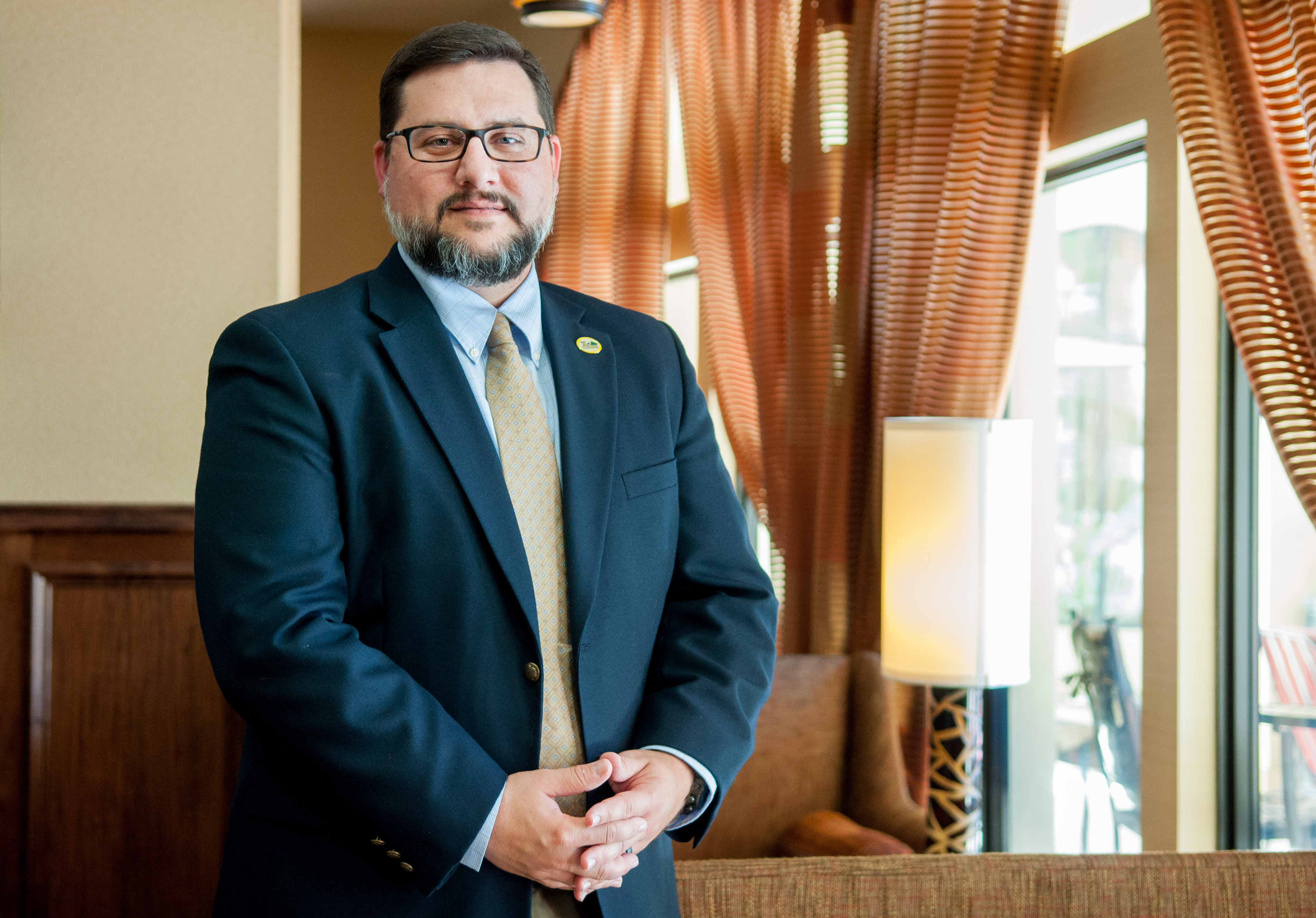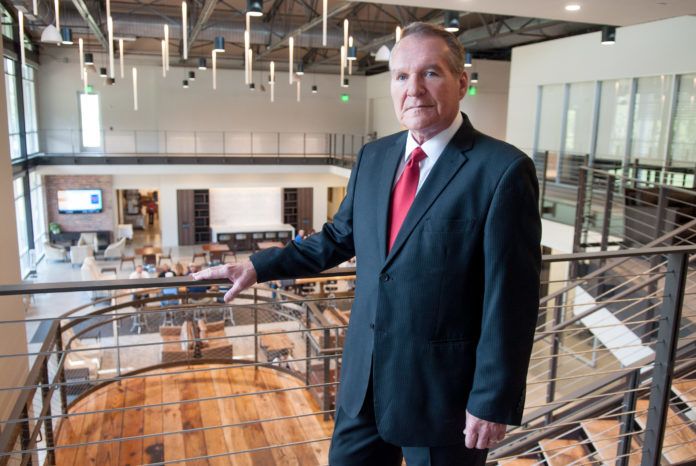Unlike a lot of economic development groups, the South Louisiana Economic Council is more about business retention than attraction these days. Given the post-2014 slump in the “bread and butter” industry of oil and gas, it was left with little choice.
SLEC President/CEO Vic Lafont’s region sits squarely in the crosshairs of a vertically integrated energy corridor, so any market fluctuation that adversely impacts the oil and gas industry has a distinct ripple effect. “In the flip of a switch, all of a sudden I was in business recovery mode, triaging companies that had really been damaged by the economy,” Lafont says.
By no means is it the region’s first experience with hardship. Lafont says the cyclical nature and unpredictability of oil, along with the occasional hurricane, have produced strength and resilience in its residents. “You’re talking about people that literally live on the water’s edge,” he adds. “They’re not afraid of anything, and they will try anything to make something work. That’s why innovation is big here. My dad always said he didn’t go to school long enough to find out what he couldn’t do. He just did it.”
This proclivity to innovate can be traced to the mid-20th century, when entire families had to adjust to the brave new world of offshore exploration and drilling. “The people here helped the out-of-state oil companies navigate those waters and drill for that oil. You’re talking about a culture that’s very creative and has had to adapt. You’ve got to learn to survive here.”
SLEC, a not-for-profit economic development agency supporting the “Bayou Region” parishes of Assumption, Lafourche, St. Mary and Terrebonne, is one of eight regional economic organizations designated as strategic partners by Louisiana Economic Development. In its current triage role, SLEC helps businesses get back on their feet by assisting them with training and attracting skilled laborers, connecting them with resources and serving as a liaison with other organizations.
Along the way, SLEC leverages resources and collaborates with other groups to create a stronger regional voice. In fact, it shares space in the same building at Nicholls State University with advocacy groups such as the Gulf Economic Survival Team, promoting Gulf of Mexico energy production; Restore or Retreat Inc., promoting coastal restoration projects; and the LA 1 Coalition, promoting the completion of the LA 1 Improvement Project.
“They’re all housed here, so we leverage our resources together,” Lafont says. “They’re part of what we call the SLEC family of operations, because at one time or another those initiatives sprang from SLEC. They just got bigger to where they needed their own space.”
SLEC was borne out of the ashes of the significantly more dismal downturn of the mid- 1980s, when a handful of concerned industry leaders came together to look for ways to diversify and lessen their dependence upon oil and gas. Since those early days, SLEC has evolved to meet the overall economic needs of the region, including but not limited to supporting startup companies, providing key data and economic statistics, disseminating building and site information, and building coalitions across parishes and organizations.
Cody Blanchard, chairman of the board for the Thibodaux Chamber of Commerce, says SLEC works directly with the chamber in providing resources for small to medium-sized businesses as one of its services. “Vic understands that while our bigger businesses are taking a hit, we should also focus on our small to mid-size businesses to help them grow,” Blanchard says.
SLEC works to connect these businesses with the Louisiana Small Business Development Center and encourages participation in the local chapter of the SCORE Association, a nonprofit group dedicated to educating entrepreneurs and helping small businesses start, grow and succeed.
DIVERSIFICATION IS KEY

Given its roots, SLEC’s central desire is to facilitate diversification so that area businesses can better weather undulating oil and gas cycles. Some high-profile examples provide proof of its success over the years—nearby Bollinger Shipyards has landed government contracts to build ships for the Coast Guard, and Edison Chouest Offshore has built seismic vessels for exploration in the Antarctic.
“Instead of going completely away from what we do, we found a way to keep doing what we do but in different markets,” Lafont says. “The key is technology; that’s what’s going to get us out of this thing.”
He is particularly optimistic about the propagation of LNG (liquefied natural gas) plants in Louisiana, which could help change the face of the area’s energy industry in coming years. In August, the Greater Lafourche Port Commission announced that Fourchon LNG LLC planned to file an application with the U.S. Federal Energy Regulatory Commission to construct an $800 million LNG production and export facility at Port Fourchon.
Once constructed, Phase 1 of the project is expected to produce 2 million tons of LNG per year for export, with a program to increase capacity up to 5 million tons in Phase 2. Fourchon LNG also plans to reserve up to half a million tons of LNG per year for domestic use, with the intent of providing fuel for the next generation of offshore supply vessels (OSVs).
Chett Chiasson, executive director of the Greater Lafourche Port Commission, expects completion of the regulatory process to take about two years, followed by another two years of construction. In the meantime, SLEC will serve as a liaison between the owner of the proposed plant, Energy World Corp., and area businesses, principally through an LED web-based platform called Louisiana Business Connection.
“Any company interested in working the project can go to the website and enter their company information,” Chiasson adds, “thereby enabling Energy World to go through a list rather than having to field phone calls and emails.”
A REGIONAL APPROACH

—CHETT CHIASSON, executive director, Greater Lafourche Port Commission, noting that Port Fourchon hasn’t lost a single tenant since reducing its land rental rates in April 2015 by 20% across the board. Photo by Don Kadair.
Chiasson is most proud of the port commission’s ability to retain business, despite the undeniable economic impact of the oil and gas decline. In fact, Port Fourchon hasn’t lost a single tenant, with much of the credit going to the commission’s decision in April 2015 to reduce its land rental rates by 20% across the board. “They’re all still there. No one’s left,” Chiasson says. “The bottom line is that what we’ve done and the action we’ve taken has allowed us to retain our customer base.”
Along the way, SLEC has also assisted port tenants. “While a lot of other economic groups focus on the front end, sometimes they forget that you have to continue to work with these businesses on the back end,” Chiasson says. Looking ahead, he plans to work closely with SLEC in the development of a regionalized port system concept that he hopes will attract new business. The system would seek to tap into the collective strengths of all ports stretching from the Port of Iberia eastward to Port Fourchon.
Additionally, Lafont hopes to leverage the Bayou Region’s strengths with other economic development agencies as a participant in the Southeast Super-Region Committee (SRC). Founded in 2009, the partnership between the Baton Rouge Area Chamber, Greater New Orleans Inc. and SLEC seeks to foster cooperation for mutual economic benefit across southeast Louisiana. The SRC focuses on issues that are super-regional in nature and more effectively addressed together, such as improving transportation infrastructure, developing the water sector, developing the biosciences and health care sector, and branding and marketing the super-region as a major metro area that is economically competitive on a global scale.
“My competition is not New Orleans and Baton Rouge,” Lafont says. “We have different bases. It’s Gulfport and Mobile. That’s our competition. We’re trying to market a region of the state to the rest of the world. We don’t want to reinvent the wheel.”
DEALING WITH A LOSS OF TALENT
While it’s true that certain industries—primarily oil and gas, agriculture and seafood—will likely remain in the Bayou Region, in some capacity, no matter the economic conditions or occurrences of natural disasters, SLEC’s challenge in coming years will be accommodating their manpower needs.
When the oil market nosedived in 2014 and 2015, many workers fled the region looking for other work. “We lost a tremendous amount of talent … pipefitters, welders, offshore hands, seasoned captains,” Lafont explains. “You can’t replace people like that very easily, so I’m in the mode of rebuilding the workforce right now. My job is to find ready, able, trained workers to meet that growth.”
The key, he says, is to stay out in front of the problem, which means training now for expected future upticks in demand. Some say that’s already happening—according to recent statistics, jobs are becoming more plentiful across the region, with an increase of 785 new jobs in Q2 2017. And in a May-over-January comparison, there was a 1,131-job increase.
“Some of them left for good, and some of them are coming back. One thing I know, you can’t find this anywhere else,” Lafont says. “It’s the people; the lifestyle. You can’t replace that. Every generation that’s lived through all of this [hardships] has proven that they can make it out. We made it then; we can make it now.”
This article was originally published in the fourth quarter 2017 edition of 10/12 Industry Report.







